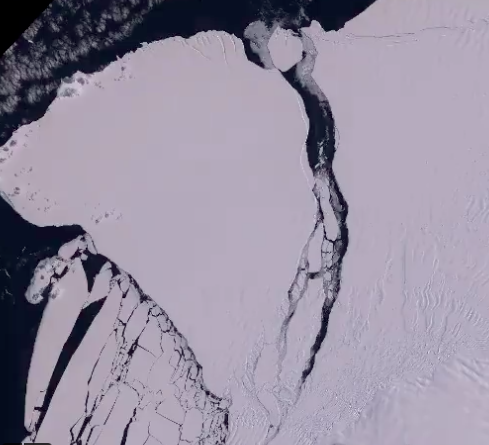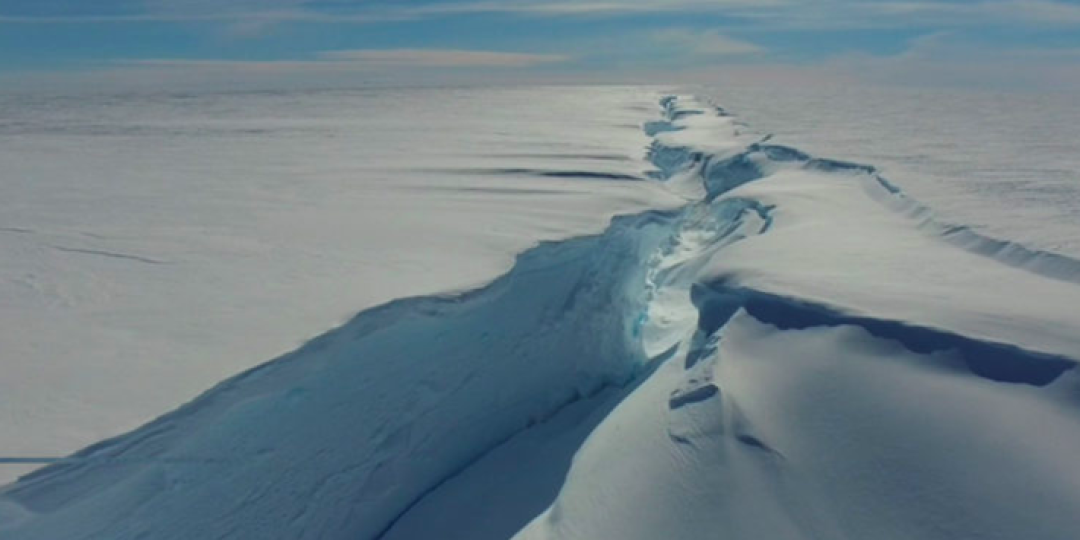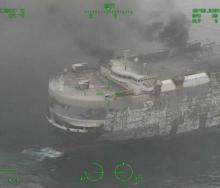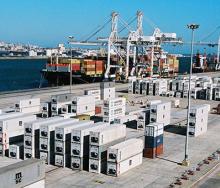The British Antarctic Survey (BAS) has released images of a massive, 1 553 square-kilometre iceberg, almost the size of greater London, as it calves away from the Antarctic Brunt Ice Shelf.
BAS posted the imagery on Twitter, which shows a giant sheet of ice, known as A81, breaking away from the shelf. The sheet of ice has been naturally slowly cracking for years, and scientists have long expected it to break away.
BAS said in a statement that the iceberg had calved on January 22 when the crack known as Chasm-1 fully extended through the ice shelf during a spring tide. The break-off is the second major calving from this area in the last two years, and has taken place a decade after scientists at BAS first detected growth of vast cracks in the ice. The BAS Halley Research Station is based on the Brunt Ice Shelf.
BAS glaciologists, who have been monitoring the behaviour of the ice shelf, reported that the area of the ice shelf where the research station is currently located remains unaffected by the recent calving events. They said the glaciological structure of the ice shelf was complex, and the impact of calving was unpredictable.
BAS relocated Halley Research Station 23km inland of Chasm-1 after it started widening in 2016. There are currently 21 staff members at the station working to maintain power supplies and facilities that keep scientific experiments operating remotely through winter. Their work will continue until they are collected by aircraft around February 6. Staff are only deployed to the station during the Antarctic summer, between November and March.

BAS director, Professor Dame Jane Francis, said the organisation’s glaciologists and operations teams had been anticipating the latest event. “Measurements of the ice shelf are carried out multiple times a day using an automated network of high-precision GPS instruments that surround the station. These measure how the ice shelf is deforming and moving, and are compared to satellite images from ESA, Nasa and the German satellite TerraSAR-X. All data are sent back to Cambridge for analysis, so we know what is happening even in the Antarctic winter – when there are no staff on the station, it is dark for 24 hours and the temperature falls below minus 50 degrees C (or -58F),” Francis said.
BAS glaciologist Professor Dominic Hodgson said the event was part of the natural behaviour of the Brunt Ice Shelf.
“It is not linked to climate change. Our science and operational teams continue to monitor the ice shelf in real-time to ensure it is safe, and to maintain the delivery of the science we undertake at Halley,” Hodgson said.
Halley VI Research Station is an internationally important platform for atmospheric and space weather observation in a climate-sensitive zone. In 2013, the station attained the World Meteorological Organization (WMO) Global Atmosphere Watch Global station status, becoming the 29th in the world and 3rd in Antarctica. Halley VI Research Station sits on Antarctica’s up to 50m thick Brunt Ice Shelf. This floating ice shelf flows at a rate of up to 2km per year west towards the sea where, at irregular intervals, it calves off icebergs.
According to BAS, the Brunt Ice Shelf is probably the most closely monitored ice shelf on earth. A network of 16 GPS instruments measure the deformation of the ice and report back on an hourly basis.














